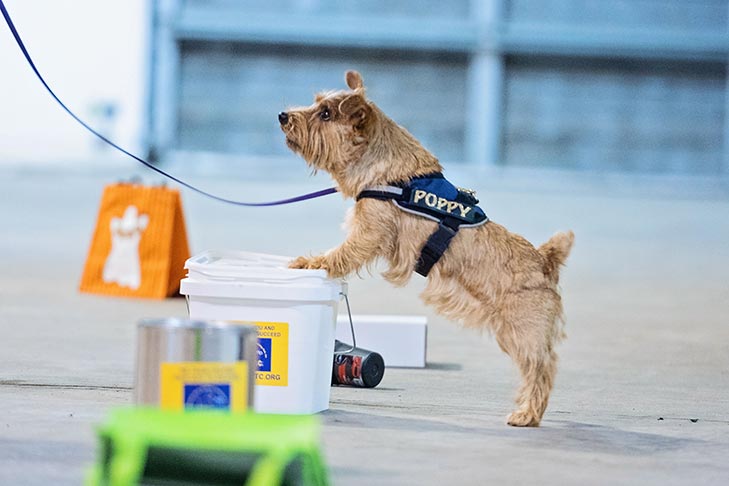
If your family is looking for a dog who can be a small but sturdy playmate for the kids by day and a delightful armchair companion by night, you might be interested in the Norfolk Terrier. Get to know this titan of the Terrier Group by reading some fascinating Norfolk Terrier facts.
1. They Were Developed by an English Horseman
Frank “Roughrider” Jones, an English horseman of the early 20th century, developed a strain of little red terriers as rat killers and fox bolters. So closely was Jones associated with this type of dog that generations of American sportsmen referred to them as Jones Terriers.
2. A Norfolk Terrier Isn’t a Toy
They’re small. They’re loyal. And they will gladly curl up in your lap. But these aren’t lapdogs. Norfolks are true terriers — feisty, fearless, and game for adventure. Among the smallest of the working terriers, Norfolks will stand 9 or 10 inches at the shoulder, but their bodies are substantial and hardy. And there’s nothing ornamental about their hard and wiry protective coats.

Norfolks are little dogs obviously built for a good day’s work. Those that love this breed describe them as a “perfect demon” in the field.
3. Norfolk or Norwich? It’s Easy to Tell Which Is “Wich”
The Kennel Club of England recognized Jones’s terrier as a breed, called the Norwich Terrier, in 1932. The AKC followed suit in 1936. Within the breed, there were always two varieties — the drop-ear and prick-ear. The Kennel Club declared the varieties two separate breeds in 1964, and the AKC did the same in 1979. The prick-eared (ears up) variety continued to be called the Norwich, and the drop-eared (ears down) was renamed the Norfolk Terrier.
Here’s a way to tell the difference between the two breeds. The “folk” in “Norfolk” sounds like “fold” (the ear is folded over). Meanwhile, the “wich” in “Norwich” sounds like “witch” (the ear is erect and comes to a point, like a witch’s hat).
4. They’re Small Dogs With Big Personalities
Ol’ Roughrider Jones bred his little red dogs to be two-in-one terriers. They were self-reliant enough to work solo as an earthdog, dispatching rats and other vermin. But they were also used in packs on foxhunts. As pack dogs, expected to get along with their packmates, they are more gregarious than typically independent-minded terriers.

These days, not many Norfolks are turned loose in packs on foxhunts. Their “pack” is more often their human family, other household dogs, and their pals at the dog run. They are among the most sociable of terriers, yet retain plenty of the classic terrier’s gameness and pep. This combination of true terrier spirit and pack-dog amity is an endearing characteristic of the breed.
5. The Breed Takes Its Name From an English County
The Norfolk Terrier gets its name from its place of origin. The county of Norfolk is located in eastern England. Norwich (the source of the Norwich Terrier’s name) is a prominent city in Norfolk.

